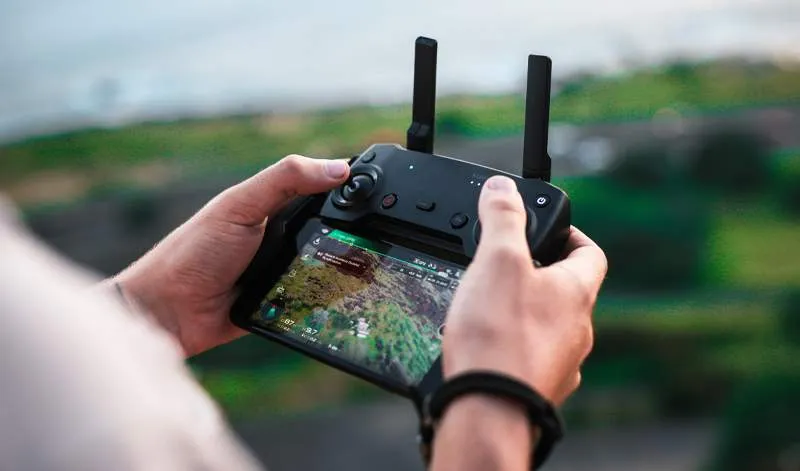Creating eLearning Content with the Latest Revolutionary Technologies

If you’re active on social media – Facebook, Instagram, and Twitter in particular – then you’ll know that the ‘#10YearChallenge’ was trending quite recently. And if you happened to miss out, don’t worry, because you didn’t miss out on much (except for maybe a few laughs here and there).
Essentially, the 10-year challenge ‘challenged’ people to post two photos of themselves ten years apart. The idea behind it was self-love and to show your followers how you’ve grown-up/ changed/ aged (or haven’t). That sort of thing. Although on a slightly more sinister note, some believe that the 10-year challenge was a project by the powers that be to mine data to train facial recognition algorithms and what not.
But that’s not the point of this article. I just threw in this quirky intro because when it comes to elearning, things have changed a lot in this industry – and fast – over the last ten years.

Table of Contents
The Evolution of eLearning Content
So, what was elearning content like ten years ago?
While a decade may not seem like a lifetime ago, the amount (and pace) of technological change that has occurred in such a relatively short space of time is pretty dizzying. I mean, I remember when my computer lessons simply involved learning how to use MS Word (with Mr Clippy on hand for some guidance) and trying to connect to the internet (when connecting still made that iconic dial-up noise).
Now we have millennials in the workplace and a new generation of young employees entering the workforce – namely Generation Z – who, for the most part, have been using internet from a young age and are adept in using technology and social media.
Considering that elearning is defined as the use of the internet and other digital technologies to educate people globally, it’s no surprise that the term is only about twenty years old.
In a business and training context, elearning refers to learning that takes place online – and from about 2006 onwards, elearning tools started becoming standard across the board. This is when the industry saw a boom in podcasting, the use of mobile internet, user-created content, gamification techniques, eBooks, online video, cloud computing, and library digitization.
In the last decade, advanced technologies have been simplifying the creation of elearning content. Elearning tools are becoming easier to use, there is a proliferation in content and expert advice, virtual classrooms and MOOCs are becoming increasingly common, people are using their smartphones to learn, and more and more professionals are making use of elearning content to enhance their skill-set to further their careers.
From Past to Present: Elearning Content in 2019
So, where are we at now? Let’s take a look at some major technologies and trends that are setting elearning on a new and exciting trajectory.
Creating Elearning Content Using AR and VR
As if one reality wasn’t enough, we now have an additional three. But that’s ok, because Virtual Reality and Augmented Reality are increasingly becoming highly important in the creation of elearning content.

Augmented Reality
Quick definition: AR is an interactive experience of a real-world environment where the objects that reside in the real-world are ‘augmented’ by computer-generated perceptual information. AR essentially alters a person’s ongoing perception of a real-world environment, whereas VR (mentioned below) completely replaces a person’s real-world environment with a simulated one.
What makes AR well-suited for elearning is that it supplements existing content via cool and interesting overlays of different graphics, images, and virtual computer-generated information that engage the learner. This, naturally, helps fully immerse the learner in the content because they are visually stimulated through the combination of physical and virtual worlds. Learners get to interact with and explore virtual information and content in a real, physical environment.
How can AR be used in creating elearning content?
- Interactive books: Consider these normal books, but a 2.0 version where some digital content is embedded into them. By placing their mobile cameras over certain pages in the book, learners will see 3D elements, audio, and animations come to life through their mobile device.
- Skills training: This is more for technicians who need training to gain assembly and maintenance skills. With AR technology, digital content is connected to machine parts, and with camera-enabled handheld devices, technicians can learn via graphic content and visual explanation.
- Scavenger Hunts: Oh. My. Goodness. YES. Who doesn’t love a scavenger hunt?! Take me back to the days when I would hunt for Easter eggs! Scavenger hunts in the workplace are a great idea because they are fun and goal-driven. For example, training facilitators can place objects around the office that employees have to find, and using geolocation, employees have to find these objects, which lead them to an online training resource, activity, or tutorial. HOW. COOL.

Virtual Reality
Quick definition: VR is an interactive computer-generated experience that occurs within a simulated environment. It incorporates mainly auditory and visual feedback, and the immersive environment can either be similar to the real world or fantastical.
In the corporate world, employees can attend face-to-face training and/or online sessions.
While video conferencing tools get the job done (except when the internet connection is a bit shaky and you now have those awful and awkward out-of-sync phases and freezing screens and constant repetitions of ‘can you hear me? Hello? Are you still there?), VR can put video conferencing to shame by placing employees in virtual environments that mimic the real world (like a training room where they can actually interact with online instructors in real time via an avatar). I guess the only downfall of VR is wearing those head-mounted displays that (in my humble opinion) aren’t the most fashionable …
How is VR technology shaping the future of elearning content?
- Interactive task walkthroughs: Employees are given a task to complete, and the task is broken down into steps. Employees then view each step and perform it on their own in the virtual environment. This ultimately helps them find out what skills they need in order to complete the task successfully. It can also help them to see if their approaches are effective or not, and if not, how they can improve them, which will ultimately improve their workplace performance.
- Virtual tours of the workplace: This is a super idea for onboarding new employees. New hires can acquaint themselves with their new work environment – without even having to step into the actual work environment. Also, new employees can interact with new customer personas (AR in the form of an avatar), therefore preparing them beforehand for potential customers they’ll have to interact with in the real world.
Quick stat in relation to elearning: It is the second most important training method within organizations. Companies are increasingly recognizing the value of moving towards blended learning and elearning as opposed to solely using instructor-led training sessions. This is because about 85% of every dollar spent on classroom training is spent on delivering it (travel time/ logistic costs etc.).
The Role of Artificial Intelligence in Elearning
Ahhhh. The robots are coming!
But I guess they’re not as scary as we think ;). (Fun fact: In South Africa, where I’m from, we call traffic lights ‘robots’. You can imagine the confusion it causes here in Germany when I say, turn right at the robot.)
If anything, AI is here to make our lives better – in the elearning industry too. In the near future, AI will be used to predict learner behavior and help make the learning experience more personal (this will be done based on what courses learners take and the level/ difficulty of each course).
Intelligent chatbots could also be a thing, where the chatbot can perform the role of an on-demand support for technical queries associated with the online course.
But one of AI’s biggest roles in elearning is Natural Language Processing. Learners can actually interact with an AI assistant in elearning platforms because the AI assistant is actually capable of understanding and recognizing the learner’s spoken language.
AI is a cost-effective solution for corporate learning because it makes it simpler, faster, and better. It is used in gamification and microlearning, meaning that employees can learn content in a fun, goal-oriented, and bite-sized manner – and all without having to be in the workplace to do so.
Quick stat: According to a report by Shiftelearning, since 2000, the market growth rate of the elearning industry has been 900%.

How Experience API Helps Create Custom Elearning Content
While AR and VR and AI are well-known trends, perhaps Experience API (xAPI) has gone a little under the radar. xAPI is defined as a new specification for learning technology that enables data-collection on a wide range of experiences a learner has. The API captures data about a person’s or group’s activities from a variety of technologies (like mobile learning, simulations, virtual worlds, and serious games to name but a few).
I’m not going to go into any detail about how xAPI works, but I will say that it’s a useful technology for elearning because it lets trainers record any learning experience in order to give them deeper insight into a learner’s unique learning path. And it’s also handy for correlating job performance data with training data to help organizations assess training effectiveness (which is great for the training needs analysis).
Custom Elearning Content with Big Data
Big Data has been a buzzword for quite a while now. In terms of the elearning industry, Big Data is the data created by learners during their online courses. Learning professionals then analyze this data to modify and improve their LMS. Once again, this is great for the personalization of an individual’s learning experience and can also help professionals adjust online training programs in order to maximize the benefits for not only the employee but for the organization as a whole in terms of ROI.
Industry research shows that ‘70% of L&D teams are keen to develop their skills in using data to design, evaluate and deliver better learning solutions.’ Many learning experts are now using smarter apps that are equipped with better analytics to help them gain a more nuanced and complete picture of how learners are performing.
Elearning with Wearable Devices
I think the name is self-explanatory, but wearable devices are smart electronic devices that are worn on the body and can serve as awesome on-the-go training tools. They can also take simulations and scenarios to new heights, so they are great for making learning more understandable, immersive, and engaging.
A really futuristic example would be Muse: a brain-sensing headband that uses sensors to track brain signals. This could be used by educators to see how students are reacting to lessons, thereby helping improve engagement. Sounds a bit too … intense … for me right now, but interesting, right?!
Companies Making Good Use of Elearning Content
No doubt about it: Elearning is the future. Market research firm Global Industry Analysts projected that elearning would reach $107 Billion in 2015 – and it did. Today, Research and Markets forecasts indicate that e-learning will grow to a staggering $325 Billion by 2025. With statistics like these, it’s clear that elearning will become an increasingly integral part of employee training. Here are some companies making good use of modern technologies to enhance their elearning content:
- Shell: Oil and gas giant Shell has an online training portal known as the Shell Open University, which offers online courses, webcasts, ebooks, and guides.
- Toyota: Toyota Motor Europe uses elearning to train over 18,000 technicians and engineers. Sann René Glaz, Toyota Motor Europe’s senior manager for the Learning Technologies Group, says, ‘… Getting people to embrace elearning is much more about change management … It’s bigger than making people use the system; it’s about changing the way they think about getting information.’
- Booking.com: My go-to app for booking accommodation, Booking.com uses elearning solutions to help novices develop their technical skills using online tutoring.
- Walmart: The retail giant actually used VR to prepare employees for the craze that is the Black Friday shopping season (pretty good idea, huh?!). And in 2017, Walmart introduced VR to employee training and development by using this tech to upgrade and enhance training at Walmart Academies. The program was a huge success, and now Walmart is providing VR headsets to all stores across the US to bring this type of training to more than one million Walmart associates. In the words of Andy Trainor, Walmart’s senior director of Walmart US Academies, ‘The great thing about VR is its ability to make learning experiential … We’ve also seen that VR training boosts confidence and retention while improving tests scores …’ (Quick note:The director’s surname is trainor, so I think he’s in the right profession …)
Elearning Content: How It Will Shape Our Future?
Elearning is an absolutely essential and critical form of training for businesses. It helps them adopt a digital-first approach to training where employees are given access to personalized, engaging, exciting, and fun content that makes them want to learn.
And the great thing about elearning content is that it is accessible to everyone. It is an incredibly vast field that offers employees an abundance of choice in terms of resources, courses, and technologies.
Personally, I think the future of elearning is incredibly exciting and fascinating, and I can’t wait to see what it’ll bring us and how it’ll influence the future of work. Having been in the education sector for a number of years, I understand the absolute necessity of leveraging various technologies to create truly engaging and fun content. The technologies I’ve mentioned above are revolutionizing the industry, and I think AR and VR, in particular, are going to shatter the glass ceiling.
But, don’t just take my word and opinion! So, to end off this article, here are some really cool quotes about the future of elearning from L&D influencers and the top three trends they believe will have the greatest impact on elearning:
I think L&D is finally recognizing that it’s been in a silo too long, and needs to connect to real business values, and practices in adjacent fields like UI/UX, AI, marketing, and more. There are opportunities to move L&D forward. – Clark Quinn, Executive Director of Quinnovation
His top three trends: Science-based learning, AR, Influences from outside L&D
In general, more and more people are drawn to a more modern, less traditional look and interface. Pragmatic, functional, clean, meaningful is becoming more important than traditional and institutional. Key question – what makes sense to the learners? – Ron Price, Chief Learning Officer at Yukon Learning.
His top three trends: Traditional elearning decline, performance support, visual design
Working in L&D means you need to consider what kind of content works best for your employees so that they can flourish in their profession and, in turn, enjoy their work experience. If you want to know more about creating a great employee experience, check out our webinar with employee experience expert, Gethin Nadin.

